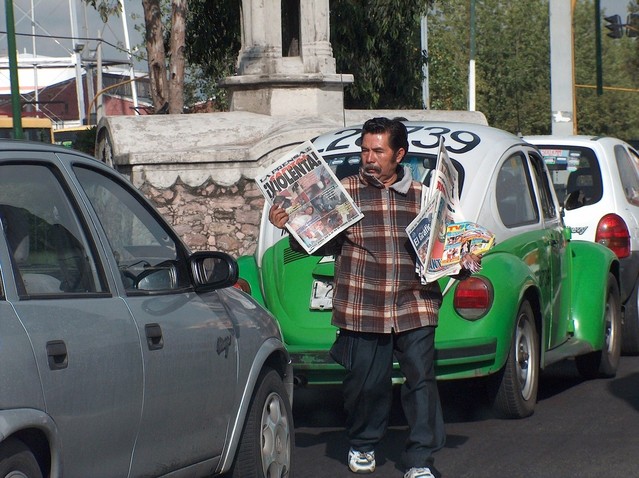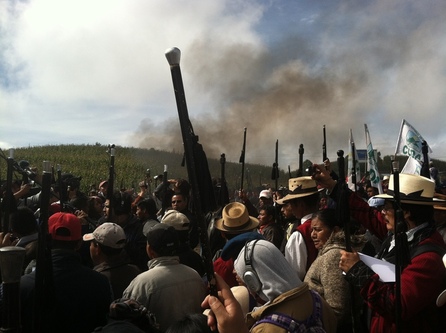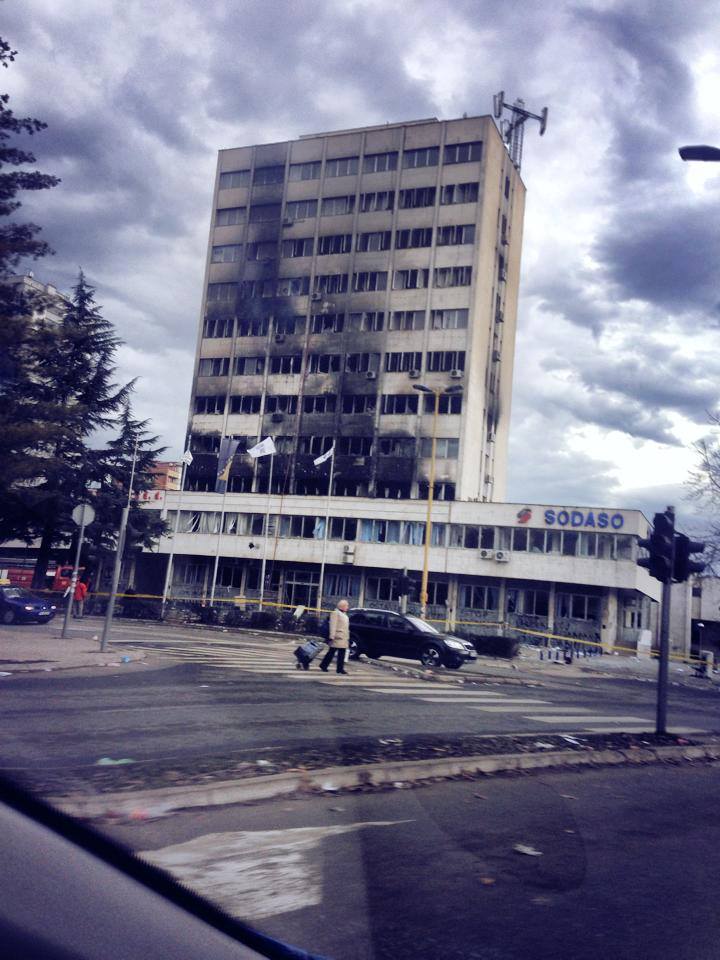Mexico’s leading presidential candidate, Andrés Manuel López Obrador, recently said he would consider offering amnesty to criminal organization members in exchange for peace.
On the one hand, Mexico’s anti-crime policies haven’t consistently reduced violence. This year Mexico is on track to have more homicides than any other year in decades. New approaches are needed, so the fresh debate is helpful. However, any sort of open negotiation with or concessions for criminal organizations would be extremely complicated.
When people think of an amnesty for violent groups, perhaps they think of two recent situations: The FARC in Colombia, which is demobilizing after decades of fighting, and the 2012 gang truce in El Salvador, which substantially cut violence for about two years. But there are serious differences between these two cases and that of Mexico.
Political or criminal groups?
One important distinction between the FARC situation and the Mexican case is the character of the groups. While the FARC is involved in the drug trade, it is at least historically motivated by political goals like land reform. This is important because it gave the government at least a degree of legitimacy to negotiate directly with the group, just as other governments have with rebel groups. Part of the reason the FARC is giving up violence is because the state is addressing some of its political demands. The peace agreement includes stipulations about land reform, social programs, and will allow the FARC to operate as a legal political party.
Mexican criminal groups, meanwhile, do not even pretend to have such political goals.
Overall, the differences between political groups such as the FARC and criminal groups such as those in Mexico have substantial implications for policy options, as I have argued elsewhere. Policies that might work against one type of group will not work the same way against another type of group. Some scholars argue that the FARC is a pure criminal group, or a “hybrid” group, and that the Mexican criminal organizations have some political dynamics. However, at the end of the day, the FARC has considerable political motivations, while the violent groups in Mexico are principally motivated by illicit financial gains. This must be kept in mind when thinking about lessons from one that can be applied to the other.
Many groups, many factions
A second issue is that the FARC negotiations involved only one militant group, and the El Salvador gang truce involved only two. In the past 10 years, Mexico has had a rotating cast of national and transnational criminal organizations, combined with a plethora of smaller gangs.
What this means is that the government could probably not reduce bloodshed with a deal for one group, or two or three. It would need to address all the groups, which seems difficult to say the least.
Furthermore, it is unlikely that most or any of the groups could credibly commit to not use violence, or reduce their violence, or whatever the Mexican government might demand. Many Mexican criminal groups operate in cell-like structures and have loosely-affiliated factions, so there is usually not a unified leadership that could get all its members to obey a truce.
Is the state capable?
Regardless of comparisons with other countries, there are reasons to doubt that the Mexican national government could keep up its own end of any bargain with criminal groups–whether a proposed amnesty was for specific groups, any individuals, or group leaders. One issue is that the state probably couldn’t guarantee the safety of criminal group members involved in a deal. For example, if the local police force is not supposed to pursue criminal organization X because it is part of an amnesty deal, but that local police force is working as agents of rival group Y, could the federal government get the police to disobey orders from group Y? We know that there is extreme corruption in many Mexican municipal police units, and the distinction between gangs and local police is often non-existent.
If there was a mass amnesty, where any criminal group member could turn himself in, the state would need to protect all of these individuals from their former employers. Not an easy task.
If the government as to certify “ex-criminals” as no longer involved in organized crime (as has happened in other demobilization processes), this is unlikely to be trustworthy, given rampant corruption.
If the amnesty was for leaders of criminal groups, not necessarily rank-and-file members, this seems problematic as well. If some kind of amnesty were offered to criminal group leaders to get their groups to reduce their violence, this would make the group easy prey for rivals. Or if an entire group turned itself in, they would surely be replaced in the criminal market. Given the high stakes of the illegal drug trade, there always appears to be a wiling substitute for any leader or group.
No easy path forward
It’s easy to shoot down ideas, but harder to propose solutions that could actually help bring peace to Mexico.
Some important potential solutions have long been suggested, but are not easy to carry out. For example, corruption lies at the heart of a great deal of the bloodshed in Mexico, and efforts to curtain corruption are sputtering. Until corruption is sincerely addressed, the violence situation is unlikely to improve. Additionally, as long as the demand for illegal drugs exists in United States, and the sources for such drugs exist in Mexico or to its south, the lucrative Mexico routes will be fought over. The fact that drug consumption is increasing in Mexico (while still far below U.S. rates) complicates this. The drug criminalization regime needs to be reconsidered. And it might seem trite to bring up economic development including jobs, but the lack of legal employment is of course a boon to criminal organizations. On all these subjects, then, new ideas are needed–along with political determination to seriously address these issues.
Brian J. Phillips works on security issues at the Center for Research and Teaching in Economics (CIDE) in Mexico City.







5 comments
“As long as the demand for illegal drugs exists in United States, and the sources for such drugs exist in Mexico or to its south, the lucrative Mexico routes will be fought over.” That is a clear-eyed assessment that few want to state. As well as the other factors you mention, Mexico’s highly stratified society has also contributed to the situation. Moving between social classes in Mexico may be getting easier, but not fast enough. The criminal lifestyle, regardless of danger, allows those at the bottom of the social ladder to attain a lifestyle previously only available to–and often flaunted by–those at the top.
If they come to the USA will have to put a choke hold on them so they can’t get away